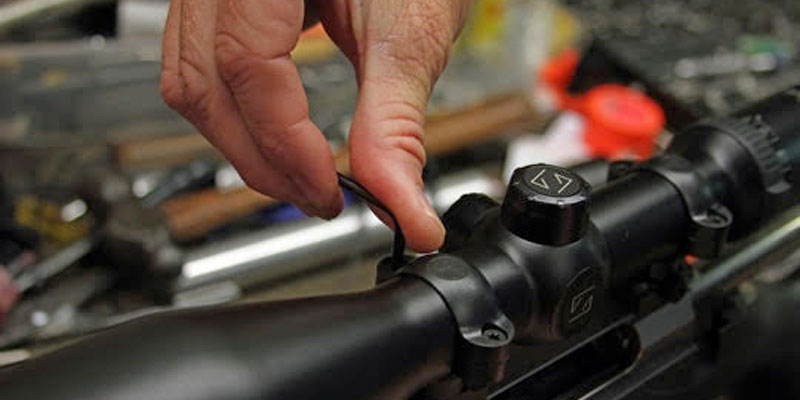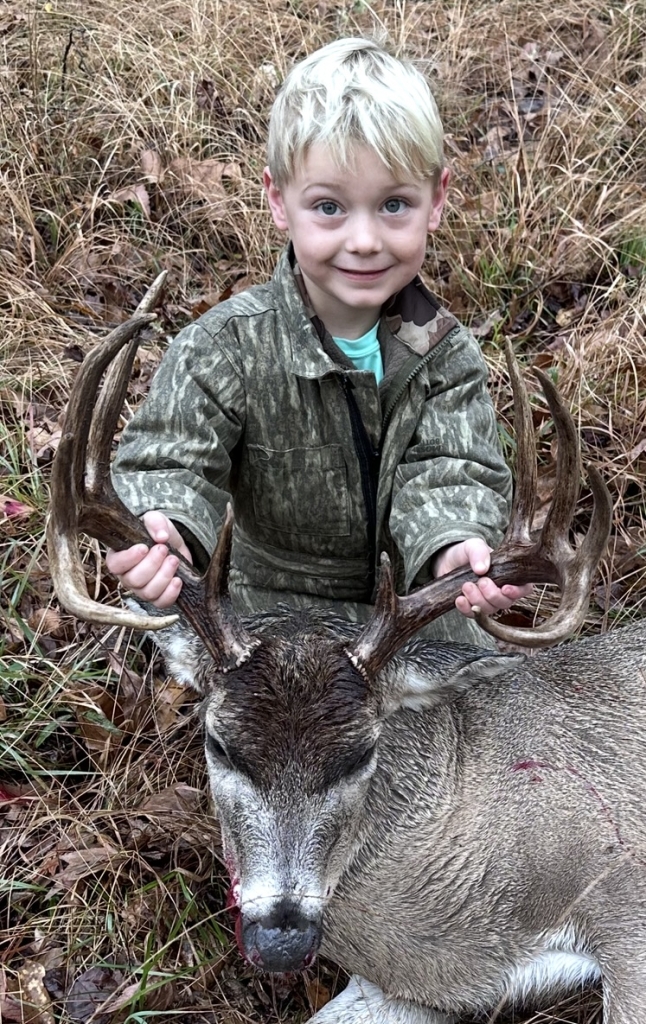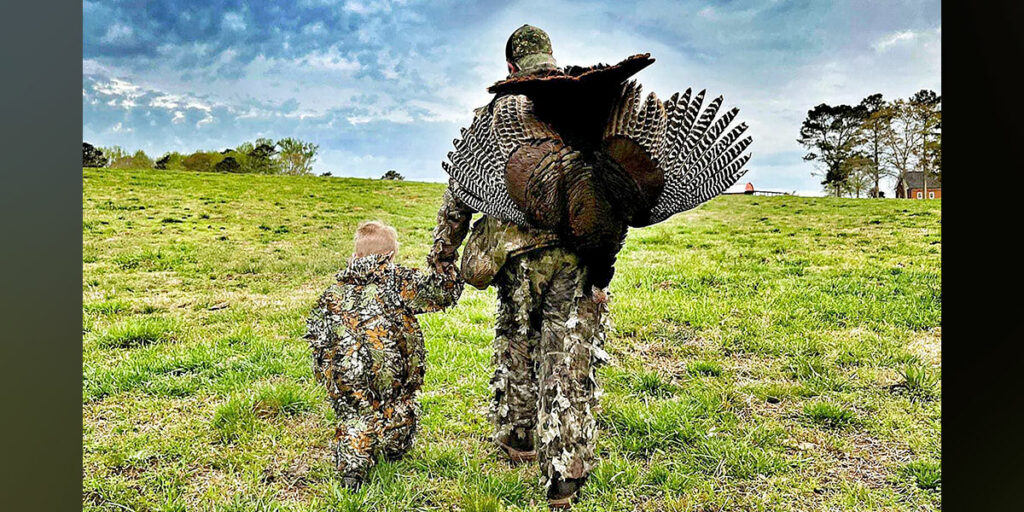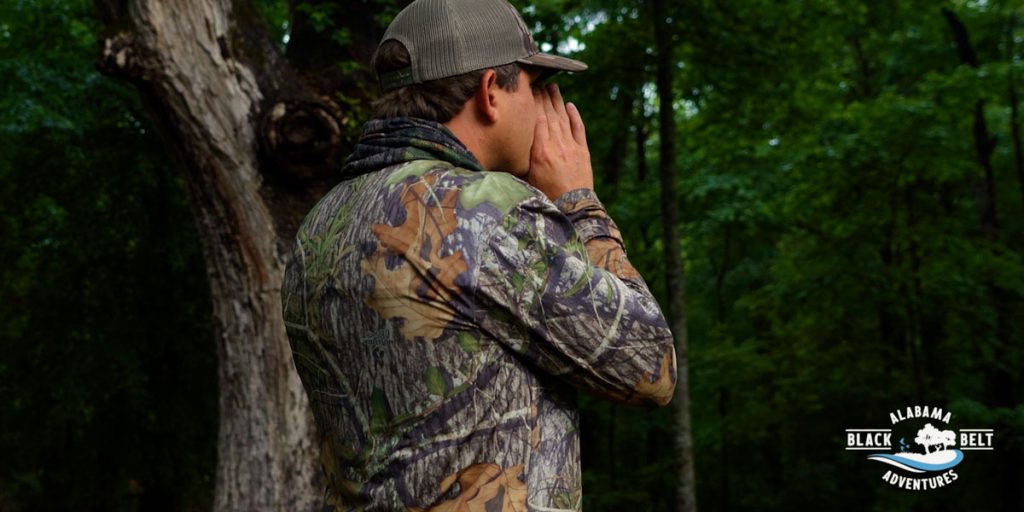
The buck of your dreams steps into the open. You try to remain calm and get ready for the shot. You place the crosshairs of your trusty scope-rifle combination on the deer’s shoulder and squeeze the trigger.
As the boom echoes across the bottom, the buck snaps his head to attention and then darts into the thicket with his white tail pointed skyward, indicating a clean miss.
What just happened? The scope had always been dead on, an inch high at 100 yards.
However, when you get back to camp and fire a test shot, the projectile lands 6 inches low at 100 yards.
That is why Brad Williamson at Quint’s Sporting Goods in Saraland, Ala., always urges customers to check their rifles before they head to the field on the opening day of gun deer season, which happens to be Nov. 18 this year.
Williamson, the son of Del and Sandra Williamson, has grown up in the sporting goods business, and he’s seen quite a few distraught hunters come in the store on Mondays to tell how they missed the big one.
“If you didn’t move anything and you go to the range, nine times out of 10, the gun will be shooting where you left it,” Williamson said. “That one time out of 10 is what’s going to cause you to lose your big buck opening weekend. We hear a lot, ‘Well, I’ve never had to touch that gun. I missed that deer, but it’s always been dead-on every year.’ Maybe last year as you were coming down out of your climbing stand or your ladder stand, you bumped it or it fell over or took a jar on a four-wheeler. Most scopes are built to where if they take a jar or bump they return to zero. But it’s still an optic on top of a rifle, and sometimes they can get out of alignment.
“What we see a lot is a lot of guys hunt hard at the end of the year, during the rut. They’re hunting in the rain or pulling tree stands out of the woods at the end of the season and neglect their guns. They put their firearms up wet sometimes. They don’t clean the barrels like they should. They’re wondering why their gun is not shooting as good. It’s because the gun had a rough end to the year.”
This is a busy time of year for the firearms department at Quint’s. Many hunters in the area bring their firearms to get them cleaned and checked out to ensure the point of impact has not changed.
If you’re going to get your gun ready yourself, Williamson suggests running a patch down the barrel to clean out any powder residue, followed by a patch lightly saturated with a powder solvent. If the barrel has been neglected and you can see rust or discoloration in the barrel after running that first patch through, it may be necessary to run a bore brush down the barrel several times to remove the rust. Follow all the cleaning with dry patches until they come out clean.
“If I’m putting a gun up at the end of the year, I put a drop or two of gun oil on a patch to run down the barrel,” he said. “When I get that gun out before the season, I’ll run a patch through the barrel to get that oil residue out. I shoot a fouling shot, and then check for accuracy.”
Typically, a missed shot from an experienced hunter can often be traced back to the riflescope and its mounting system. With the Redfield- and Leupold-style mount with windage screws to adjust the rear mount, Williamson always makes sure those screws are still tight.
Then he moves to the ring screws that hold the scope in the mount. Make sure they’re tight but don’t overtighten. A little touch of blue Loc-Tite on the threads of the screws for the rings and bases will help keep anything from coming loose.
“If you’re trying to troubleshoot something and you don’t think it’s your barrel or your scope, sometimes you have to check your base screws,” Williamson said. “Unfortunately, you have to pull the scope off to get to the bases, which costs you some more ammo to get back on target. But sometimes that’s what you have to do.”
Once the scope mount is secure and the barrel is clean, if you’re still having accuracy issues, Williamson suggests moving to the ammunition component.
“Make sure you’re shooting the same ammo you had last year,” he said. “We’ve had cases where different brands of ammo or different bullet weights would be several inches apart on the target. Some people will tell you brands don’t matter. That might be true at 50 or 75 yards or maybe even out to 100 yards. Those shots might stay in the kill zone of a deer. But if you do get the opportunity to shoot at a deer at 300 yards, and the gun is shooting a little low at 100, you’re going to be way off at 300 yards.
“Ammunition does make a difference, especially when it comes to shooting different weights of bullets like 150-grain or 180-grain. Some people remember that forever, but some don’t even remember what brand ammo they shot last year. More times than you can believe, we’ll have a gun come in with the shell holder on the stock, and it will be filled with ammo with different bullet weights. So, make sure you’re shooting the same brand and bullet weight.”
Occasionally, the scopes will fail, and there’s no repair facility at the local sporting goods store.
“If you see fog in the scope, the seals have failed,” Williamson said. “There is nobody locally who can fix that. It has to go back to the factory. The scopes are nitrogen-filled. The seals have to be replaced and then refilled with nitrogen to make them waterproof and fogproof.
“If your scope fogged up last year, it’s going to fog up this year. And it will probably be at the worst possible time. It’s going to happen as the sun comes up and the temperature changes. Then you’re not going to be able to see through the scope. And remember, you get what you pay for in scopes.”
Quality optics are especially important for folks like me, who are getting a little long in the tooth and don’t see nearly as well as they once did.
“As you get older, your eyesight fades and scopes become more important,” Williamson said. “What your son or daughter is seeing through the scope is different from what you’re seeing. Buying a combo gun with a scope already mounted will get you in the woods, but there are better options.”
During his years behind the gun counter, Williamson hasn’t seen it all when it comes to firearms and optics, but he thinks he’s getting close. The store has a 100-yard range where they sight in rifles, sometimes up to 40 a day.
“One day we had a guy come in who wanted to know if we sighted in scopes,” he said. “We told him we did. He proceeded to hand us his scope and wanted us to sight it in. But he didn’t have his rifle with him. We told him we would have to have the rifle and the scope to be able to sight it in.
“We’ve had guns come in with the scopes mounted backwards. Some people have mounted their own scopes and used a base that is not designed for their rifle. They might have a Weaver-style base for a Marlin 30-30 on a bolt-action rifle. They could only get two of the screw holes to line up. So instead of four base screws, it only had two. The guy couldn’t get it to shoot, so he brought it to us. We ended up taking the scope off and found out he had a Marlin base on a Remington rifle.”
And don’t get Williamson started on some of the things that have come out of the gun barrels.
“We’ve had everything you can imagine, from dirt dauber nests to completely plugged with mud,” he said. “And you’ve got to be extremely careful. You can bulge a barrel with just water or oil in the barrel. If there is an obstruction, that barrel will likely explode.”
“You’ve got to check your barrel to make sure it’s clear of any obstructions.”
David Rainer is an award-winning writer who has covered Alabama’s great outdoors for 25 years.












